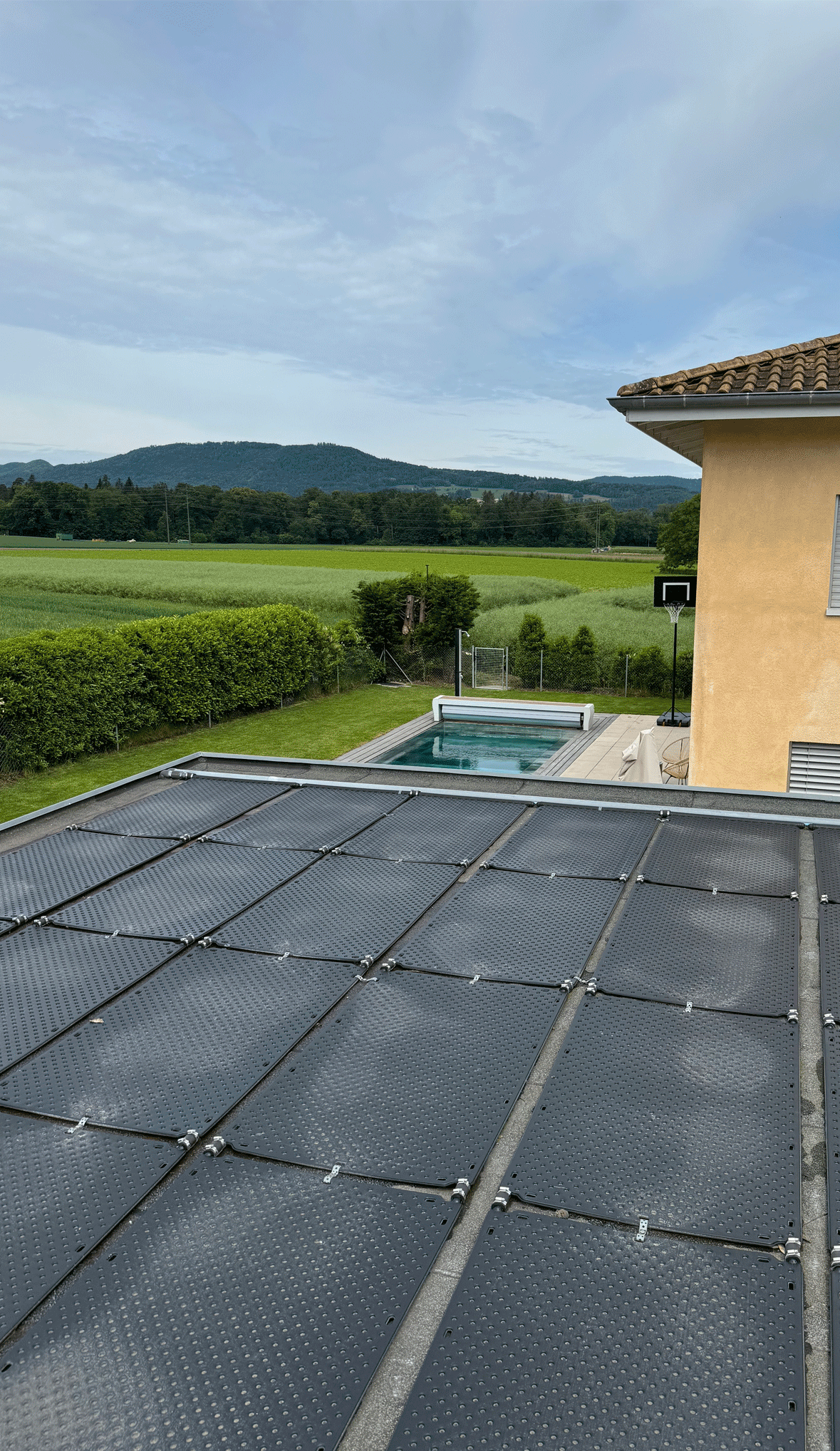An automated solar cover with solar slats offers many advantages:
- UV light does not enter the pool by inhibiting the formation of algae.
- The solar slats are easy to clean.
- Opening and closing the pool is effortless and requires no force.
- The pool water is heated slightly while the temperature is maintained at nighttime.
However, there are also disadvantages to using solar slats:
Solar slats only heat the uppermost, already warmest layer of water. This water reaches deeper layers via the skimmer or overflow, but only when the filtration pump runs. To do this, it has to pass through the entire pipework, the pump and the water filter, which causes it to give off heat.
It would be more efficient to heat the deeper layers of water directly and let it flow back down again - which is what absorber technology does.
Another disadvantage of solar slats becomes apparent when the water reaches the ideal pool temperature: you cannot stop the heating cannot unless you open the pool. Unfortunately, it's not always possible: during the summer vacations, for example.
Very warm water favourites the formation of algae and bacteria and therefore requires more chemicals.
The advantages of absorber technology for pool heating:
Absorber technology works on a temperature-controlled basis: The system measures the water temperature and the temperature of the absorbers in the sun. With a sufficient temperature difference, a small pump switches on and feeds the pool water through the absorbers. On a sunny day, a pool with a volume of 40m³ and an absorber surface area of 25m² can be heated by up to 6°C. If the pool is too warm, you can run the pump manually at night to cool the water down efficiently.
Our recommendation for optimum pool heating:
To efficiently heat your pool, combine somple slats that maintain the temperature at night with absorber technology. This way, you can always enjoy the optimum water temperature with the lowest heating costs.

The example picture shows the temperature development in a pool with absorber heating and slatted cover on a cloudy day at max. 20°C. The pool is constantly at least 4°C warmer than the ambient temperature and cools down much less at night.



